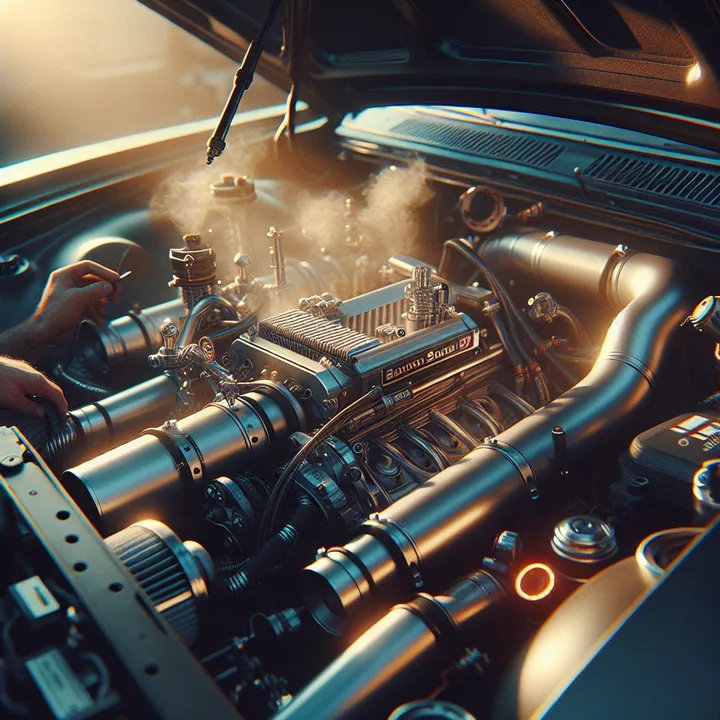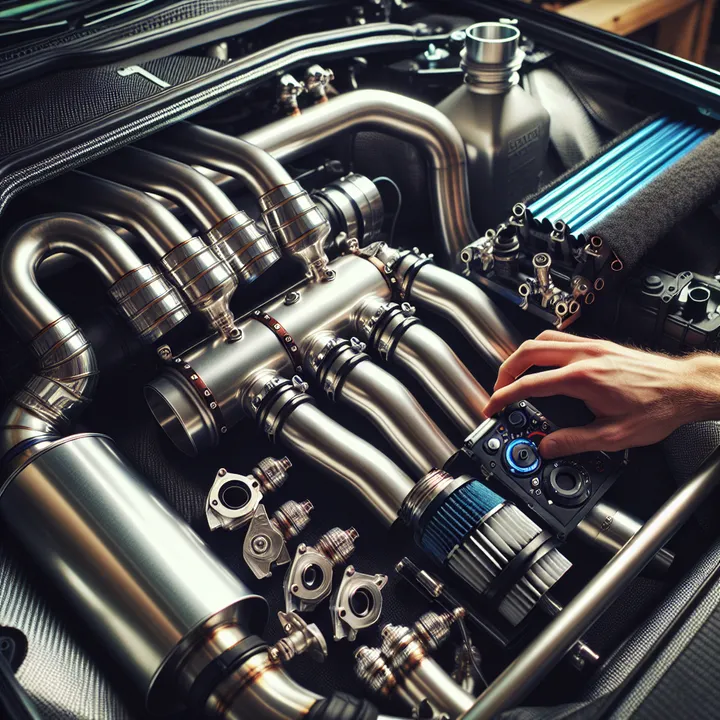


Cars come equipped with mufflers as part of their exhaust systems to reduce noise levels and comply with regulations. However, some car enthusiasts prefer a louder and more aggressive exhaust note for various reasons, such as personal preference or a desire to enhance the driving experience. While removing the muffler is a common approach, there are alternative methods to make a car louder without completely eliminating the muffler.

Before we dive into the solutions, let's quickly go over the basics of your car's exhaust system. The muffler is designed to dampen the noise from the exhaust gases, ensuring a quieter operation. However, it's not the only component that affects the sound. Here's a breakdown of the key components:
| Component | Function |
|---|---|
| Muffler | Reduces exhaust noise by dampening sound waves |
| Catalytic Converter | Converts harmful pollutants into less harmful emissions |
| Resonator | Cancels out specific sound frequencies for a quieter operation |
| Exhaust Pipes | Channels exhaust gases from the engine to the rear of the vehicle |
Restrictive parts like catalytic converters and resonators play a significant role in reducing noise levels, contributing to a quieter overall exhaust note.
If your car's exhaust note is too tame for your liking, there could be a few reasons behind it:
The stock muffler is often designed to prioritize quietness over performance.
Restrictive components like catalytic converters and resonators muffle the sound.
Exhaust leaks or loose components can affect the overall noise level.
Before making any modifications, it's crucial to inspect your exhaust system thoroughly. Here's what you should do:
Listen for any unusual noises like raspy or droning sounds, which could indicate issues.
Visually inspect the entire exhaust system for any leaks or damage.
Ensure that all exhaust hangers and mounts are tight and not broken.
Now, let's get to the good stuff – the solutions that can make your car louder without removing the muffler.
One of the most effective and straightforward solutions is to replace your stock muffler with an aftermarket performance muffler. These mufflers are designed with less sound-dampening material, allowing for a louder and more aggressive exhaust note.
Here are some popular performance muffler brands and their key features:
| Brand | Key Features |
|---|---|
| Flowmaster | Known for their deep, aggressive tone and durable construction |
| Borla | Offers a wide range of mufflers with various sound levels and materials |
| Magnaflow | Provides a balance between performance and sound quality |
| Walker | Affordable option with a variety of muffler styles and sizes |
Another option is to install aftermarket resonator delete pipes or straight pipes. Resonators are components in the exhaust system that help reduce specific frequencies, contributing to a quieter operation. By removing these restrictive resonators, you can achieve a more pronounced exhaust note without compromising performance.
Here's a comparison of resonator delete pipes and straight pipes:
| Type | Description |
|---|---|
| Resonator Delete Pipes | Replaces the resonator with a straight pipe section, allowing for a louder exhaust note |
| Straight Pipes | Completely removes the resonator and any other restrictive components for maximum exhaust flow |
If you're willing to invest a bit more, upgrading to an aftermarket cat-back exhaust system can be a game-changer. These systems replace the components from the catalytic converter back, including the muffler, resonators, and exhaust pipes. With less restrictive components and larger-diameter pipes, you'll experience improved exhaust flow and a more aggressive sound.

Some popular cat-back exhaust system brands include:
Borla
Magnaflow
Banks
MBRP
Flowmaster
While these modifications can enhance your car's exhaust note, it's essential to maintain your exhaust system properly:
Regularly inspect the entire system for any leaks, damage, or loose components.
Avoid aggressive driving that can cause premature failure.
Use proper jacking techniques to avoid damaging the exhaust components.
When it comes to modifying your exhaust system, the costs can vary depending on the route you choose. Here's a general cost breakdown:
| Modification | Typical Cost Range |
|---|---|
| Performance Muffler | $100 - $300 |
| Resonator Delete Pipes | $50 - $150 |
| Straight Pipes | $50 - $150 |
| Cat-Back Exhaust System | $300 - $1,000 |
The most cost-effective solution is likely replacing just the muffler, which can significantly increase exhaust noise without major modifications. However, if you're looking for the ultimate exhaust note and performance gains, investing in a complete cat-back system might be worth considering.
Making your car louder without removing the muffler is entirely possible with the right modifications. Whether you opt for an aftermarket performance muffler, resonator delete pipes, or a complete cat-back exhaust system, you'll be able to enjoy a more aggressive and satisfying exhaust note.
Just remember to prioritize proper installation and maintenance to prevent any issues down the road. Additionally, be mindful of local noise regulations and avoid excessive noise that could disturb others.
So, go ahead and unleash the beast within your ride, but do it responsibly and legally. Happy modding, and enjoy that sweet, rumbling exhaust note!
A muffler is designed to reduce exhaust noise by dampening sound waves from the engine. It helps ensure a quieter operation of the vehicle.
The catalytic converter is a restrictive component that helps convert harmful pollutants into less harmful emissions, but it also contributes to muffling the exhaust sound.
A resonator is a component that cancels out specific sound frequencies, helping to reduce overall noise levels in the exhaust system.
Before any modifications, inspect the entire exhaust system for leaks, damage, and ensure all hangers and mounts are tight and not broken.
Some well-known performance muffler brands include Flowmaster, Borla, Magnaflow, and Walker.
Resonator delete pipes replace the resonator with a straight pipe section, while straight pipes completely remove the resonator and any other restrictive components.
A cat-back exhaust system replaces components from the catalytic converter back, including the muffler, resonators, and exhaust pipes, for improved exhaust flow and sound.
Regularly inspect the entire exhaust system for leaks, damage, or loose components, and avoid aggressive driving that can cause premature failure.
Replacing just the muffler with an aftermarket performance muffler is typically the most cost-effective solution to increase exhaust noise.
Be mindful of local noise regulations and avoid excessive noise that could disturb others when modifying your exhaust system.

Sarah isn't your average gearhead. With a double major in Mechanical Engineering and Automotive Technology, she dived straight into the world of car repair. After 15 years of turning wrenches at dealerships and independent shops, Sarah joined MICDOT to share her expertise and passion for making cars run like new. Her in-depth knowledge and knack for explaining complex issues in simple terms make her a valuable asset to our team.











